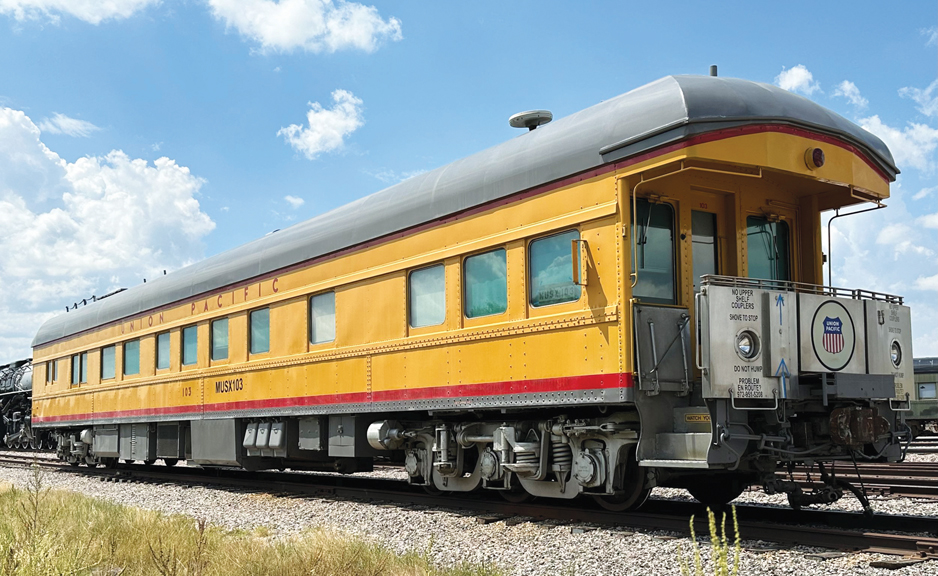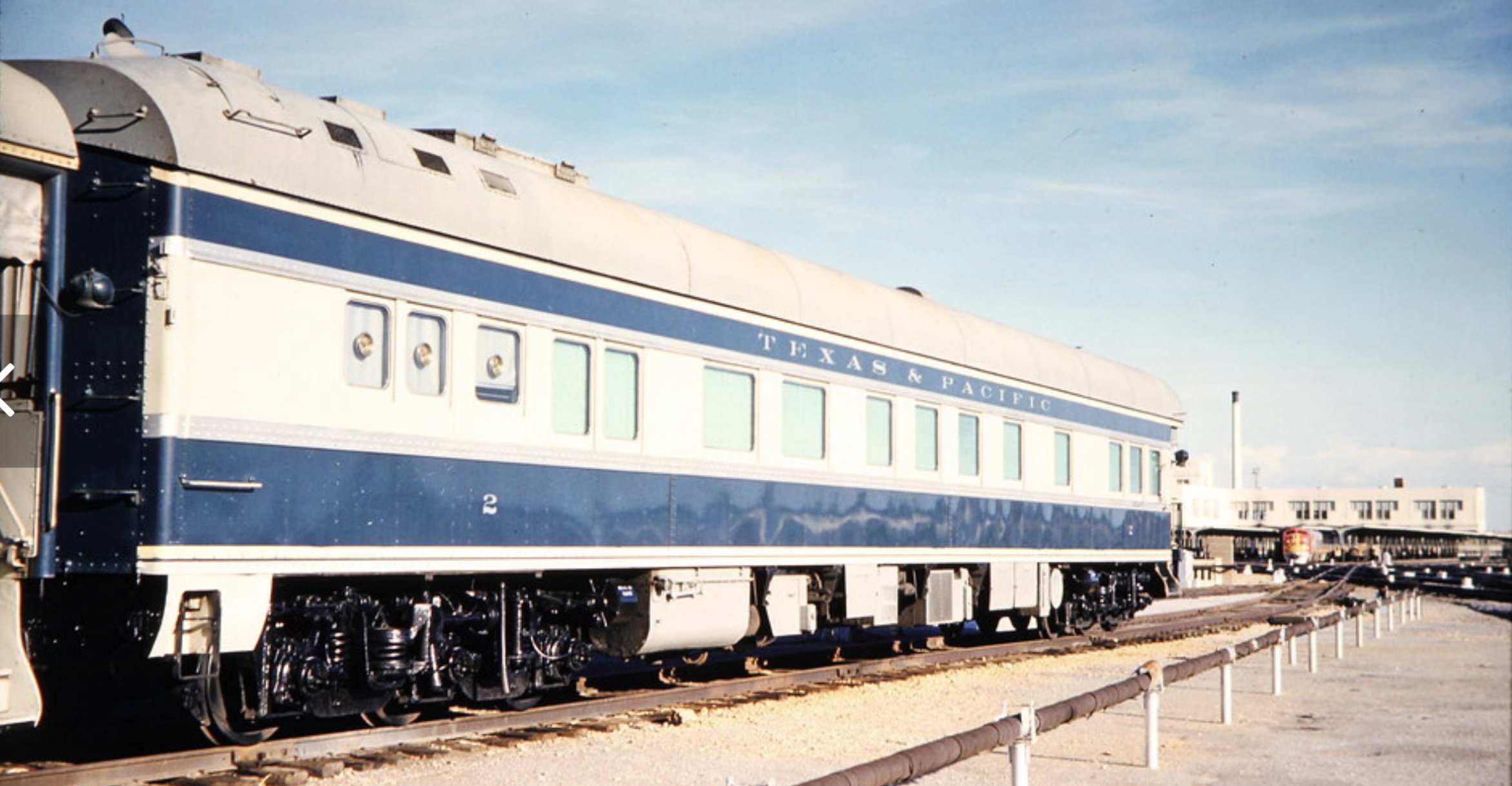All about the community of model railroading and rail enthusiasm
October 24, 2024
A former Texas & Pacific business car is back on the rails in Texas after a 97-year journey that took it to California.
The California State Railroad Museum recently gifted former T&P Business Car No. 2 to the Museum of the American Railroad in Frisco. The car, which frequently roamed the rails in Texas and the Southwest, arrived Sept. 6.
No. 2’s return is the result of years of partnership in preservation between the museums.
Built in 1928 by American Car and Foundry in St. Louis, T&P No. 2 was one of a pair of business cars assigned to upper management. It likely was occupied by railroad legend and former T&P president John L. Lancaster, who’s credited with pulling the T&P out of financial straits and securing major investments in new passenger station and freight facilities in Fort Worth.

Designed for end-of-train service, UP No. 103 has an open rear platform, typical of most business cars. Its interior floor plan includes private accommodations, including staterooms, rear salon/office, formal dining room, and galley with crew’s quarters. The car defines opulence of the era, when railroads were at the pinnacle of growth and their managers traveled in style tending to business and entertaining shippers.
Like all business cars, UP No. 103 was meticulously maintained, and received numerous upgrades throughout its career. The car was extensively modernized by the T&P in 1964, with the addition of a new streamline style roof, Thermopane windows, air conditioning, and modern trucks. It was conveyed to the Missouri Pacific Railroad and re-numbered 10 following the line’s absorption of the T&P. It became part of Union Pacific’s business car fleet following the merger with MP in 1982.
After Union Pacific acquired the T&P, the car was repainted UP No. 103 and maintained its classy look with the latest in all-steel construction and fine hardwoods throughout its interior.
UP No. 103 was retired in 1992 and donated to the California State Railroad Museum. The car was well-cared for during the ensuing years, but a shift in focus and space constraints led to discussions with the Museum of the American Railroad about giving it a new role in Texas. Given its provenance on the T&P, the museums decided to bring the car home.
Union Pacific and BNSF worked together to bring the car to Texas.
“Working with their public affairs, operating, and mechanical folks, the lines provided seamless transportation at reduced cost, delivering 103 without a scratch,” the Museum of the American Railroad said on its website. “We are very grateful to everyone at both railroads for their support.”
UP No. 103 joins the museum’s collection as a significant piece of Texas railroad history, representing the T&P when it was an independent road and connected Texarkana, Dallas/Fort Worth and El Paso. The line put North Texas on the map when it crossed the Houston & Texas Central in 1873, creating the first major rail junction in Dallas.
The H&TC was constructed a year earlier on its way from Houston to the Red River and points north.
